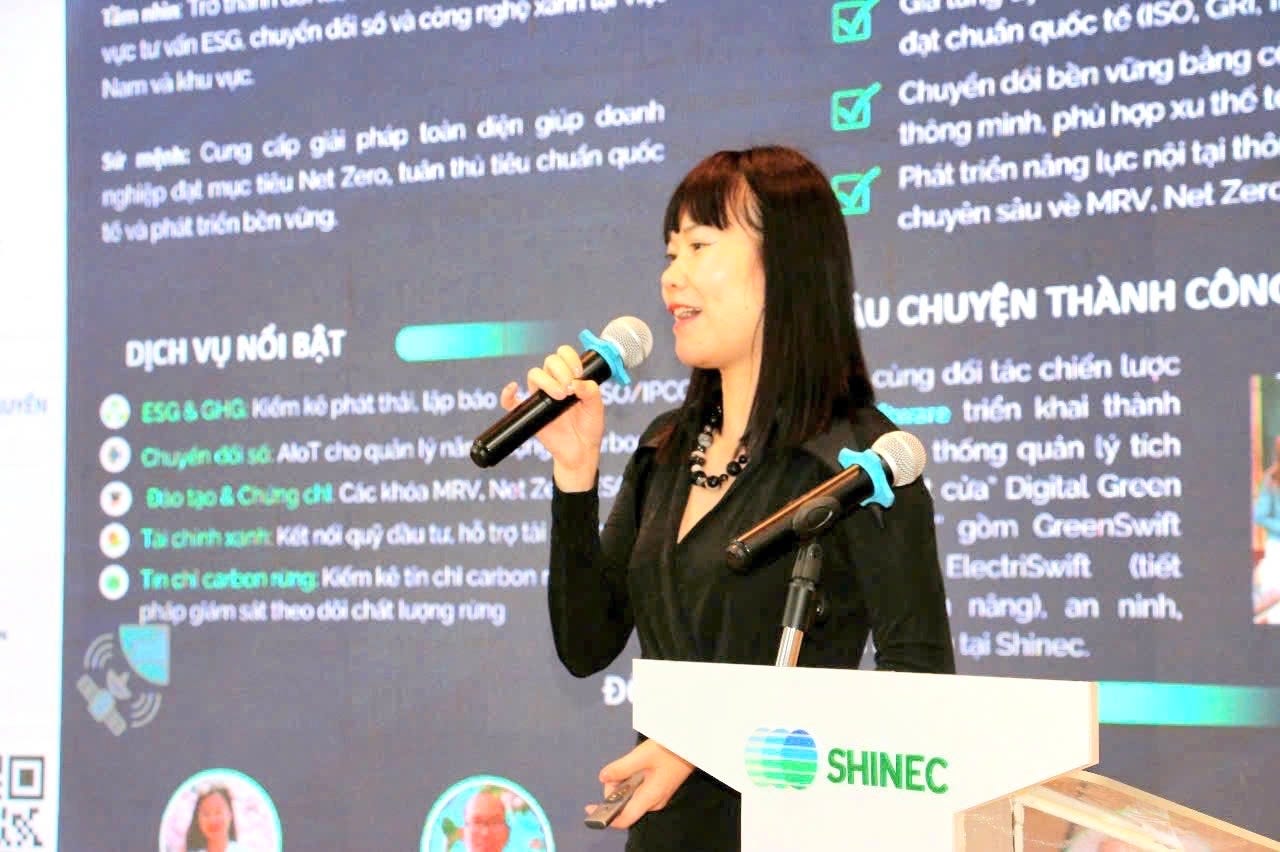In a special report for Mekong Dispatch, Dr. Nguyen Kim Anh — an ESG advisor and environmental remote sensing expert at the Vietnam Academy of Science and Technology — explores how Vietnam is adopting ESG principles to drive the development of green industrial parks. She highlights the transformative role of AIoT, artificial intelligence, remote sensing, and integrated one-stop technologies in enabling real-time monitoring, optimizing operations, and advancing truly sustainable growth. The Editors.
In a landmark move for Vietnam’s industrial sector, Shinec, a leader in the field of of developing ecological industrial parks, officially launched its “Digital Green Economy” platform at Nam Cau Kien Eco-Industrial Park, aiming to set a new standard for sustainability and carbon management in industrial zones.
Developed in partnership with GGI Technology and TPIsoftware, the platform brings a suite of smart features to monitor and manage environmental performance, helping industrial operators meet international standards and gear up for global carbon market participation.
Digitizing the Green Transition
The platform integrates advanced digital tools designed to track and reduce environmental impact. Its flagship module, GreenSwift, enables businesses to calculate their carbon footprint using ISO 14064-1 standards, offering granular insights into emissions from energy use and other operational activities.
“Digitalization is no longer optional in achieving sustainability,” said Pham Hong Diep, Chairman of Shinec. “We see this as a vital investment to increase transparency, cut emissions, and move closer to our goal of carbon neutrality by 2030.”
Alongside GreenSwift, the platform includes ElectriSwift, a real-time energy monitoring tool that not only tracks consumption but also recommends efficiency improvements and evaluates rooftop solar potential.
Other features include wastewater quality monitoring, which assesses chemical indicators like pH, TSS, COD, BOD, and Ammonia before and after treatment. The system calculates associated greenhouse gas emissions, giving operators a full picture of their environmental footprint.
To ensure site safety and regulatory compliance, an AIoT-powered security system offers intelligent surveillance with alerts for fire, accidents, or intrusions — all managed via intuitive dashboards accessible from mobile devices.
More broadly, the adoption of digital tools like artificial intelligence is seen as a powerful accelerator of Vietnam’s green ambitions. By automating data collection, optimizing energy use, and predicting maintenance needs, AI enables more precise and efficient environmental management. This kind of smart automation not only helps companies reduce emissions and cut waste but also lays critical groundwork for compliance with tightening global regulations on carbon accountability and sustainability.
Building a Model Eco-Industrial Park
Shinec’s broader vision extends beyond data collection. At Nam Cau Kien, 31% of the park is already allocated to green spaces and renewable energy installations, with plans underway to digitally map and quantify carbon sequestration through landscape vegetation. This opens the door for verified participation in voluntary carbon credit markets.
“This platform brings us closer to achieving international certifications like ISO 50001 for energy management and ISO 14068 for carbon neutrality,” said Diep. “But more importantly, it aligns with our environmental and economic values — promoting responsible industry growth without compromising the planet.”
Aligned with National Priorities
Vietnam’s Resolution 57 underscores the critical role of science, technology, and innovation in shaping a resilient economy. Shinec’s new platform directly responds to this call by leveraging smart digital infrastructure to future-proof industrial development.
Incorporating AI, IoT, and sustainability metrics, the platform demonstrates how digital tools can support national climate objectives, such as the transition to a low-carbon economy and compliance with global regulations like the EU’s Carbon Border Adjustment Mechanism (CBAM).
Scaling for Broader Impact
The launch at Nam Cau Kien is intended as a prototype, with Shinec planning to replicate the system across its wider network of industrial parks. The platform’s modular design means it can be tailored to different site needs, allowing for scalable deployment across various sectors.
As countries and companies face increasing pressure to account for and reduce carbon emissions, Shinec’s Digital Green Economy platform could offer a practical model — not only for Vietnam but also for other emerging economies seeking to combine economic growth with environmental stewardship.
“Vietnam’s industrial future must be sustainable, transparent, and tech-driven,” said Diep. “We believe this is the blueprint for that future.”






